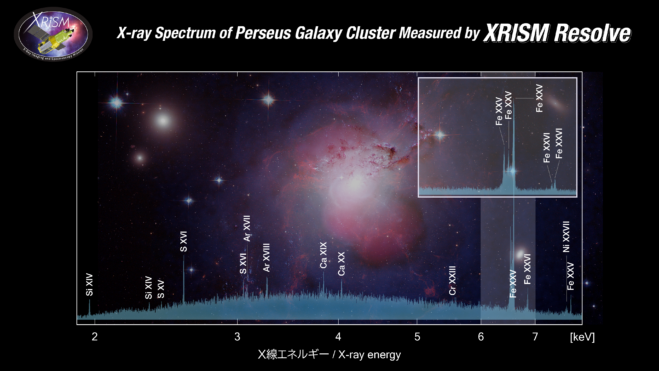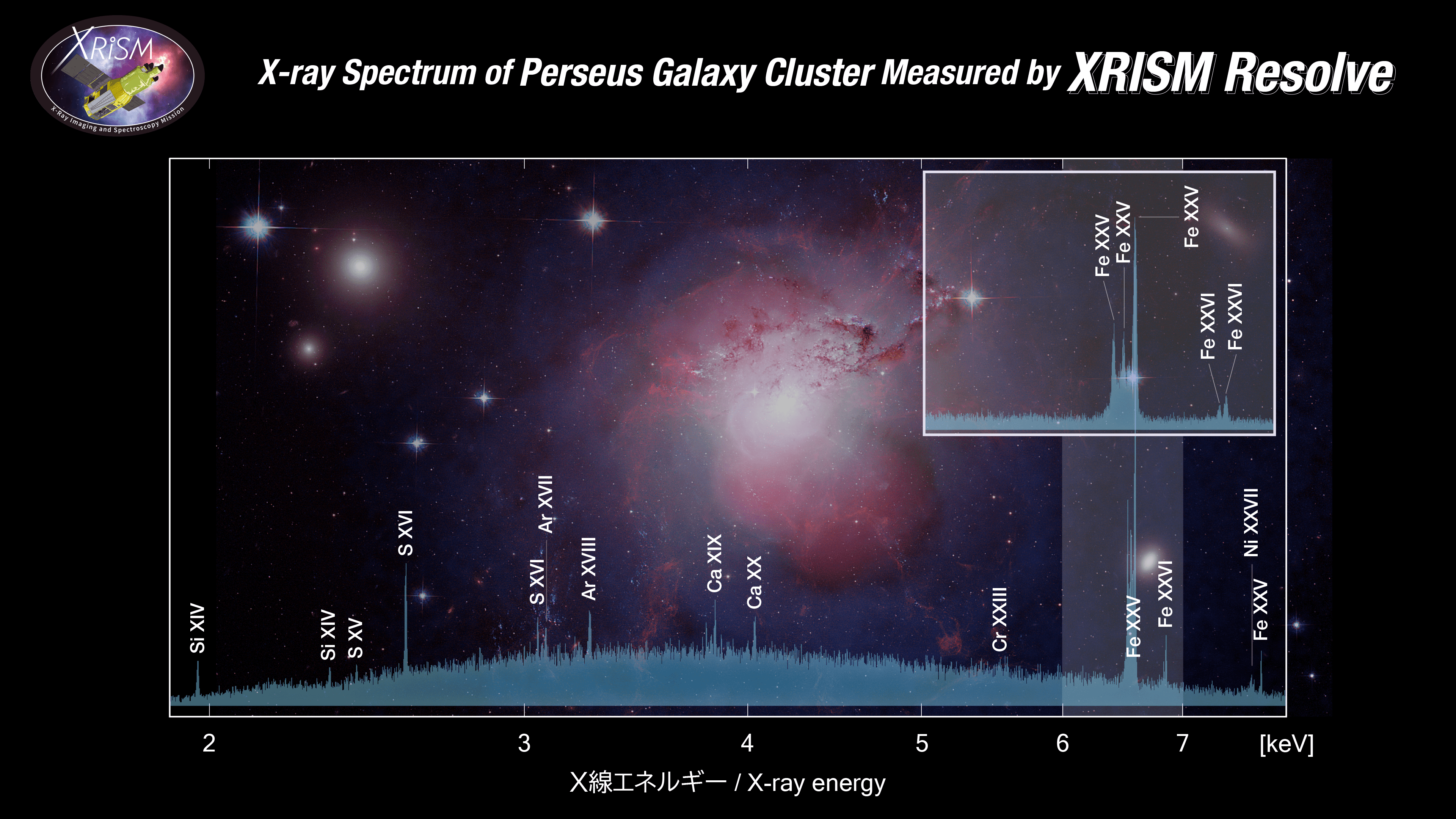

The Japan Aerospace Exploration Agency (JAXA) is pleased to announce that the X-ray Imaging and Spectroscopy Mission (XRISM) completed its commissioning period as planned and has transitioned to the nominal phase.
XRISM is conducting an initial calibration and performance verification operation to understand the individual characteristics of its onboard instruments and improve observation accuracy. XRISM will then start astronomical observations based on proposals from global researchers.
The accompanying figure shows a spectrum of the central region of the Perseus cluster, obtained with the soft X-ray spectrometer (Resolve) onboard XRISM. The Perseus cluster is a galaxy cluster located about 240 million light-years from Earth and is the most luminous giant cluster of galaxies in X-rays. The precise X-ray spectra from Resolve will reveal the distribution and motion of dark matter by measuring the temperature and velocity of the plasma. This data is expected to reveal how clusters of galaxies form and how they evolve.
Image Credit: JAXA/NASA/CXC/IoA/A.Fabian et al./NRAO/VLA/G. Taylor/ESA/Hubble Heritage (STScI/AURA)/Univ. of Cambridge)